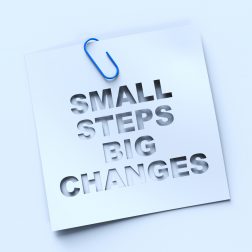 As a leader, you must be adept at handling diverse teams, managing conflicts, and driving productivity. One tool I’ve been impressed with that significantly aids in this process is the DISC assessment, which is a powerful tool to enhance communication, respect and build stronger teams.
As a leader, you must be adept at handling diverse teams, managing conflicts, and driving productivity. One tool I’ve been impressed with that significantly aids in this process is the DISC assessment, which is a powerful tool to enhance communication, respect and build stronger teams.
Understanding the DISC Model
The DISC model is a behavioral assessment that categorizes individuals into four primary areas:
Dominance (D)
- Characteristics: Assertive, driven, results-oriented
- Strengths in Leadership: Quick decision-makers, goal-oriented
- Communication Style: Direct and to the point
Influence (I)
- Characteristics: Persuasive, enthusiastic, open to collaboration
- Strengths in Leadership: Motivating, energetic, good at encouraging others
- Communication Style: Social and engaging
Steadiness (S)
- Characteristics: Patient, calm, supportive
- Strengths in Leadership: Team-oriented, dependable, good listeners
- Communication Style: Patient and understanding
Conscientiousness (C)
- Characteristics: Analytical, detail-oriented, systematic
- Strengths in Leadership: Strategic thinkers, maintain high standards
- Communication Style: Precise and factual
Key Benefits:
Enhanced Communication
One of the most significant benefits of using DISC is improved communication within teams. By understanding the different DISC styles, leaders can tailor their communication methods to better align with their team’s preferences. This customization leads to clearer understanding, less miscommunication, and more effective collaboration.
Conflict Resolution
DISC also aids in conflict resolution by providing insights into how different team members may respond to stress or disagreement. The DISC Comparison Report provides insights of two individuals (side-by-side) so they can learn to understand the other person, with the goal being respect and communication. These reports allow you to enhance communication and mediate conflicts more effectively, creating a harmonious work environment. Entire Team Reports are also available.
Personal Development
On a personal level, DISC will help you and your leaders gain self-awareness about your own leadership style. By recognizing your natural tendencies, you can work on areas for improvement and leverage your strengths to become more effective.
Applying DISC
To effectively integrate the DISC model into your leadership strategy, consider the following steps:
- Conduct DISC Assessments: Start by having your team members take a DISC assessment. This will provide a baseline understanding of each individual’s style.
- Analyze and Share Results: Review the results and share them with your team. Encourage open discussions about individual styles and how they can complement each other. Comparison and Team Reports are available for this.
- Communication Strategies: Based on the DISC feedback, develop tailored communication strategies for each team member. Consider how you might adjust your approach to align with their communication preferences.
- Monitor and Adjust: Regularly assess the effectiveness of your communication strategies and adjust as needed. Encourage feedback from your team to ensure ongoing improvement.
By incorporating DISC feedback into your employee development practices and fostering an understanding and appreciation of diverse working styles, you’ll be able to build a more cohesive, productive, and satisfying work environment.
If you’re interested in exploring the benefits of the DISC assessment, please contact me – lindsay@windridgeconsulting.com



